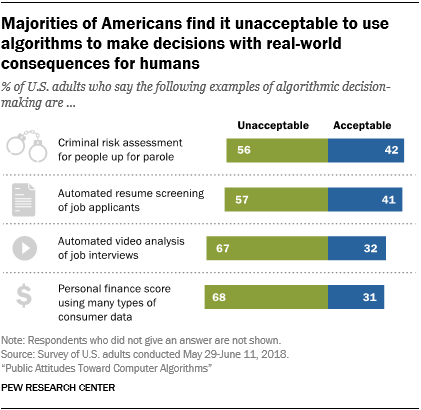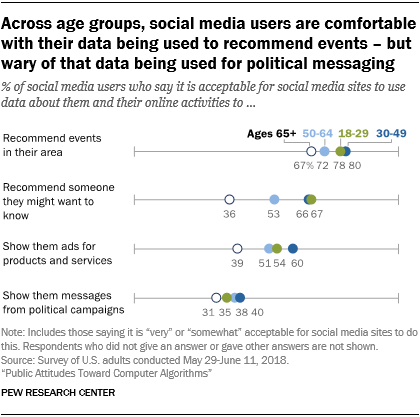Stacy Wood in KULA: knowledge creation, dissemination, and preservation studies: “This paper considers the history and politics of ‘police data.’ Police data, I contend, is a category of endangered data reliant on voluntary and inconsistent reporting by law enforcement agencies; it is also inconsistently described and routinely housed in systems that were not designed with long-term strategies for data preservation, curation or management in mind. Moreover, whereas US law enforcement agencies have, for over a century, produced and published a great deal of data about crime, data about the ways in which police officers spend their time and make decisions about resources—as well as information about patterns of individual officer behavior, use of force, and in-custody deaths—is difficult to find. This presents a paradoxical situation wherein vast stores of extant data are completely inaccessible to the public. This paradoxical state is not new, but the continuation of a long history co-constituted by technologies, epistemologies
Participatory Design for Innovation in Access to Justice
Margaret Hagan at Daedalus: “Most access-to-justice technologies are designed by lawyers and reflect lawyers’ perspectives on what people need. Most of these technologies do not fulfill their promise because the people they are designed to serve do not use them. Participatory design, which was developed in Scandinavia as a process for creating better software, brings end users and other stakeholders into the design process to help decide what problems need to be solved and how. Work at the Stanford Legal Design Lab highlights new insights about what tools can provide the assistance that people actually need, and about where and how they are likely to access and use those tools. These participatory design models lead to more effective innovation and greater community engagement with courts and the legal system.
A decade into the push for innovation in access to justice, most efforts reflect the interests and concerns of courts and lawyers rather than the needs of the people the innovations are supposed to serve. New legal technologies and services, whether aiming to help people expunge their criminal records or to get divorced in more cooperative ways, have not been adopted by the general public. Instead, it is primarily lawyers who use them.1
One way to increase the likelihood that innovations will serve clients would be to involve clients in designing them. Participatory design emerged in Scandinavia in the 1970s as a way to think more effectively about decision-making in the workplace. It evolved into a strategy for developing software in which potential users were invited to help define a vision of a product, and it has since been widely used for changing systems like elementary education, hospital services, and smart cities, which use data and technology to improve sustainability and foster economic development.3
Participatory design’s promise is that “system innovation” is more likely to be effective in producing tools that the target group will use and in spending existing resources efficiently to do so. Courts spend an enormous amount of money on information technology every year. But the technology often fails to meet courts’ goals: barely half of the people affected are satisfied with courts’ customer service….(More)”.
Innovations In The Fight Against Corruption In Latin America
Blog Post by Beth Noveck: “…The Inter-American Development Bank (IADB) has published an important, practical and prescriptive report with recommendations for every sector of society from government to individuals on innovative and effective approaches to combatting corruption. While focused on Latin America, the report’s proposals, especially those on the application of new technology in the fight against corruption, are relevant around the world….

The recommendations about the use of new technologies, including big data, blockchain and collective intelligence, are drawn from an effort undertaken last year by the Governance Lab at New York University’s Tandon School of Engineering to crowdsource such solutions and advice on how to implement them from a hundred global experts. (See the Smarter Crowdsourcing against Corruption report here.)…
Big data, when published as open data, namely in a form that can be re-used without legal or technical restriction and in a machine-readable format that computers can analyze, is another tool in the fight against corruption. With machine readable, big and open data, those outside of government can pinpoint and measure irregularities in government contracting, as Instituto Observ is doing in Brazil.
Opening up judicial data, such as information about case processing times, judges’ and prosecutors’ salaries, information about selection processes, such as CV’s, professional and academic backgrounds, and written and oral exam scores provides activists and reformers with the tools to fight judicial corruption. The Civil Association for Equality and Justice (ACIJ) (a non-profit advocacy group) in Argentina uses such open justice data in its Concursos Transparentes (Transparent Contests) to fight judicial corruption. Jusbrasil is a private open justice company also using open data to reform the courts in Brazil….(More)”
Cybersecurity of the Person
Paper by Jeff Kosseff: “U.S. cybersecurity law is largely an outgrowth of the early-aughts concerns over identity theft and financial fraud. Cybersecurity laws focus on protecting identifiers such as driver’s licenses and social security numbers, and financial data such as credit card numbers. Federal and state laws require companies to protect this data and notify individuals when it is breached, and impose civil and criminal liability on hackers who steal or damage this data. In this paper, I argue that our current cybersecurity laws are too narrowly focused on financial harms. While such concerns remain valid, they are only one part of the cybersecurity challenge that our nation faces.
Too often overlooked by the cybersecurity profession are the harms to individuals, such as revenge pornography and online harassment. Our legal system typically addresses these harms through retrospective criminal prosecution and civil litigation, both of which face significant limits. Accounting for such harms in our conception of cybersecurity will help to better align our laws with these threats and reduce the likelihood of the harms occurring….(More)”,
G20/OECD Compendium of good practices on the use of open data for Anti-corruption
OECD: “This compendium of good practices was prepared by the OECD at the request of the G20 Anti-corruption Working Group (ACWG), to raise awareness of the benefits of open data policies and initiatives in:
- fighting corruption,
- increasing public sector transparency and integrity,
- fostering economic development and social innovation.
This compendium provides an overview of initiatives for the publication and re-use of open data to fight corruption across OECD and G20 countries and underscores the impact that a digital transformation of the public sector can deliver in terms of better governance across policy areas. The practices illustrate the use of open data as a way of fighting corruption and show how open data principles can be translated into concrete initiatives.
The publication is divided into three sections:
Section 1 discusses the benefits of open data for greater public sector transparency and performance, national competitiveness and social engagement, and how these initiatives contribute to greater public trust in government.
Section 2 highlights the preconditions necessary across different policy areas related to anti-corruption (e.g. open government, public procurement) to sustain the implementation of an “Open by default” approach that could help government move from a perspective that focuses on increasing access to public sector information to one that enhances the publication of open government data for re-use and value co-creation.
Section 3 presents the results of the OECD survey administered across OECD and G20 countries, good practices on the publishing and reusing of open data for anti-corruption in G20 countries, and lessons learned from the definition and implementation of these initiatives. This chapter also discusses the implications for broader national matters such as freedom of press, and the involvement of key actors of the open data ecosystem (e.g. journalists and civil society organisations) as key partners in open data re-use for anti-corruption…(More)”.
New methods help identify what drives sensitive or socially unacceptable behaviors
Mary Guiden at Physorg: “Conservation scientists and statisticians at Colorado State University have teamed up to solve a key problem for the study of sensitive behaviors like poaching, harassment, bribery, and drug use.
Sensitive behaviors—defined as socially unacceptable or not compliant with rules and regulations—are notoriously hard to study, researchers say, because people often do not want to answer direct questions about them.
To overcome this challenge, scientists have developed indirect questioning approaches that protect responders’ identities. However, these methods also make it difficult to predict which sectors of a population are more likely to participate in sensitive behaviors, and which factors, such as knowledge of laws, education, or income, influence the probability that an individual will engage in a sensitive behavior.
Assistant Professor Jennifer Solomon and Associate Professor Michael Gavin of the Department of Human Dimensions of Natural Resources at CSU, and Abu Conteh from MacEwan University in Alberta, Canada, have teamed up with Professor Jay Breidt and doctoral student Meng Cao in the CSU Department of Statistics to develop a new method to solve the problem.
The study, “Understanding the drivers of sensitive behavior using Poisson regression from quantitative randomized response technique data,” was published recently in PLOS One.
Conteh, who, as a doctoral student, worked with Gavin in New Zealand, used a specific technique, known as quantitative randomized response, to elicit confidential answers to questions on behaviors related to non-compliance with natural resource regulations from a protected area in Sierra Leone.
In this technique, the researcher conducting interviews has a large container containing
Armed with the new computer program, the scientists found that people from rural communities with less access to jobs in urban centers were more likely to hunt in the reserve. People in communities with a greater
The researchers said that collaborating across disciplines was and is key to addressing complex problems like this one. It is commonplace for people to be noncompliant with rules and regulations and equally important for social scientists to analyze these behaviors
Digital Technologies for Transparency in Public Investment: New Tools to Empower Citizens and Governments
Paper by Kahn, Theodore; Baron, Alejandro; Vieyra, Juan Cruz: Improving infrastructure and basic services is a central task in the region’s growth and development agenda. Despite the importance of private sector participation, governments will continue to play a defining role in planning, financing, executing, and overseeing key infrastructure projects and service delivery. This reality puts a premium on the efficient and transparent management of public investment, especially in light of the considerable technical, administrative, and political challenges and vulnerability to corruption and rent-seeking associated with large public works.
The recent spate of corruption scandals surrounding public procurement and infrastructure projects in the region underscores the urgency of this agenda. The emergence of new digital technologies offers powerful tools for governments and citizens in the region to improve the transparency and efficiency of public investment. This paper examines the challenges of building transparent public investment management systems, both conceptually and in the specific case of Latin America and the Caribbean, and highlights how a suite of new technological tools can improve the implementation of infrastructure projects and public services. The discussion is informed by the experience of the Inter-American Development Bank in designing and implementing the MapaInversiones platform. The paper concludes with several concrete policy recommendations for the region…. (More)”
Public Attitudes Toward Computer Algorithms
Aaron Smith at the Pew Research Center: “Algorithms are all around us, utilizing massive stores of data and complex analytics to make decisions with often significant impacts on humans. They recommend books and movies for us to read and watch, surface news stories they think we might find relevant, estimate the likelihood that a tumor is cancerous and predict whether someone might be a criminal or a worthwhile credit risk. But despite the growing presence of algorithms in many aspects of daily life, a Pew Research Center survey of U.S. adults finds that the public is frequently skeptical of these tools when used in various real-life situations.
This skepticism spans several dimensions. At a broad level, 58% of Americans feel that computer programs will always reflect some level of human bias – although 40% think these programs can be designed in a way that is bias-free. And in various contexts, the public worries that these tools might violate privacy, fail to capture the nuance of complex situations, or simply put the people they are evaluating in an unfair situation. Public perceptions of algorithmic decision-making are also often highly contextual. The survey shows that otherwise similar technologies can be viewed with support or suspicion depending on the circumstances or on the tasks they are assigned to do….
The following are among the major findings.
The public expresses broad concerns about the fairness and acceptability of using computers for decision-making in situations with important real-world consequences
By and large, the public views these examples of algorithmic decision-making as unfair to the people the computer-based systems are evaluating. Most notably, only around one-third of Americans think that the video job interview and personal finance score algorithms would be fair to job applicants and consumers. When asked directly whether they think the use of these algorithms is acceptable, a majority of the public says that they are not acceptable. Two-thirds of Americans (68%) find the personal finance score algorithm unacceptable, and 67% say the computer-aided video job analysis algorithm is unacceptable….
Attitudes toward algorithmic decision-making can depend heavily on context
Despite the consistencies in some of these responses, the survey also highlights the ways in which Americans’ attitudes toward algorithmic decision-making can depend heavily on the context of those decisions and the characteristics of the people who might be affected….
When it comes to the algorithms that underpin the social media environment, users’ comfort level with sharing their personal information also depends heavily on how and why their data are being used. A 75% majority of social media users say they would be comfortable sharing their data with those sites if it were used to recommend events they might like to attend. But that share falls to just 37% if their data are being used to deliver messages from political campaigns.
In other instances, different types of users offer divergent views about the collection and use of their personal data. For instance, about two-thirds of social media users younger than 50 find it acceptable for social media platforms to use their personal data to recommend connecting with people they might want to know. But that view is shared by fewer than half of users ages 65 and older….(More)”.
The Blockchain and the New Architecture of Trust

Book by Kevin Werbach: “The blockchain entered the world on January 3, 2009, introducing an innovative new trust architecture: an environment in which users trust a system—for example, a shared ledger of information—without necessarily trusting any of its components. The cryptocurrency Bitcoin is the most famous implementation of the blockchain, but hundreds of other companies have been founded and billions of dollars invested in similar applications since Bitcoin’s launch. Some see the blockchain as offering more opportunities for criminal behavior than benefits to society. In this book, Kevin Werbach shows how a technology resting on foundations of mutual mistrust can become trustworthy.
The blockchain, built on open software and decentralized foundations that allow anyone to participate, seems like a threat to any form of regulation. In fact, Werbach argues, law and the blockchain need each other. Blockchain systems that ignore law and governance are likely to
Tricky Design: The Ethics of Things
Book edited by Tom Fisher and Lorraine Gamman: “Tricky Things responds to the burgeoning of scholarly interest in the cultural meanings of objects, by addressing the moral complexity of certain designed objects and systems.
The volume brings together leading international designers, scholars and critics to explore some of the ways in which the practice of design and its outcomes can have a dark side, even when the intention is to design for the public good. Considering a range of designed objects and relationships, including guns, eyewear, assisted suicide kits, anti-rape devices, passports and prisons, the contributors offer a view of design as both progressive and problematic, able to propose new material and human relationships, yet also constrained by social norms and ideology.
This contradictory, tricky quality of design is explored in the editors’ introduction, which positions the objects, systems, services and ‘things’ discussed in the book in relation to the idea of the trickster that occurs in anthropological literature, as well as in classical thought, discussing design interventions that have positive and negative ethical consequences. These will include objects, both material and ‘immaterial’, systems with both local and global scope, and also different processes of designing.
This important new volume brings a fresh perspective to the complex nature of ‘things


